The Imperial Palace Tour
Tokyo has been at the center of Japanese politics since the early 1600s, when Shogun Tokugawa Ieyasu upset the balance of power by moving his court here, far away from the traditional capital of Kyoto. Ieyasu’s original castle is now gone, replaced by the more modern Imperial Palace. We joined a brief tour to get a peek behind the gates.
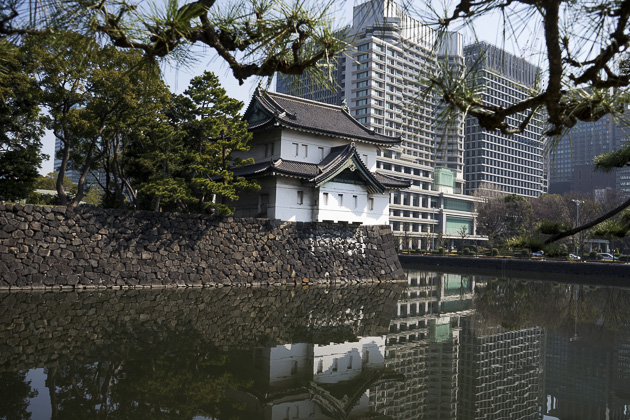
It seems almost unfair that, in the dead center of a city so swamped with skyscrapers and cement, the royal family enjoys life in a lush, spacious garden. The Imperial Palace occupies a verdant park with none of the congestion suffered by the city itself, and entrance is strictly regulated. The moats and gates which still protect the palace may not be entirely effective against modern militaries, but they do a fair job of impeding gawking visitors like us.
In order to visit the Imperial Palace, you have to register for a free tour. Do this well in advance, as spots fill up quickly. When our date came around, we joined about a hundred other tourists, most of them Japanese, in front of the Kikyo-Mon Gate. It was immediately apparent that we weren’t about to enjoy an intimate tour into the inner workings of the palace. There would be no private tea session with the Empress. No, this was about as cattle-herd as tours get. After picking up audio-guides, visitors are led without pause along a rigid path, past the palace and a few other historic buildings. Stragglers are chastened by attentive guards.
We were fine with the strict rules. This is the Imperial Palace, after all. We marched dutifully along, listening to descriptions of buildings like the Fujimi-yagura, a three-floor keep from which the Shogun could view Mount Fuji. This and a few others structures date from the days of Edo Castle, which burnt to the ground in 1873.
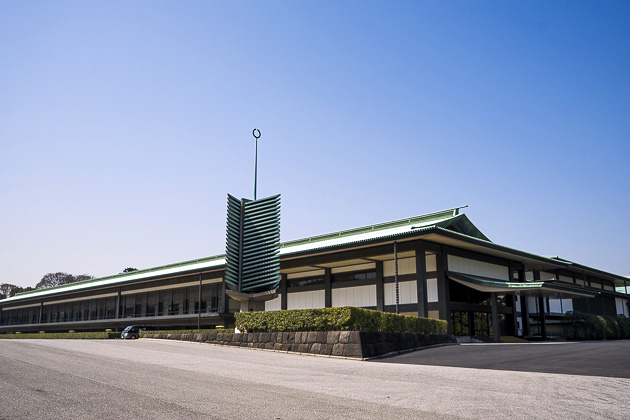
The current palace was built in 1888, and isn’t at all how I’d have expected the home of the Japanese Emperor to look. It’s not inelegant, but the building is long and flat, most resembling an extended hall. We were only able to see one side of it, from the Kyuden Totei Plaza, where our tour paused. This plaza is opened to the general public twice a year, on New Year’s and the Emperor’s birthday, when Akihito himself appears on the balcony alongside his family to greet well-wishers.
After viewing the palace, our tour crossed the Nijubashi Bridge, which we had admired while in the Outer Garden. From here, we had a view of the Fushimi-yagura keep, which was moved intact to Tokyo from its original location at Kyoto Castle, and is considered one of Japan’s architectural treasures.
Our visit was done in about an hour and although we’d had just a cursory glimpse of the palace and its grounds, it was still a worthwhile excursion. This is one of the most historic places in Japan, and it’s nice to have the opportunity to visit, however briefly.
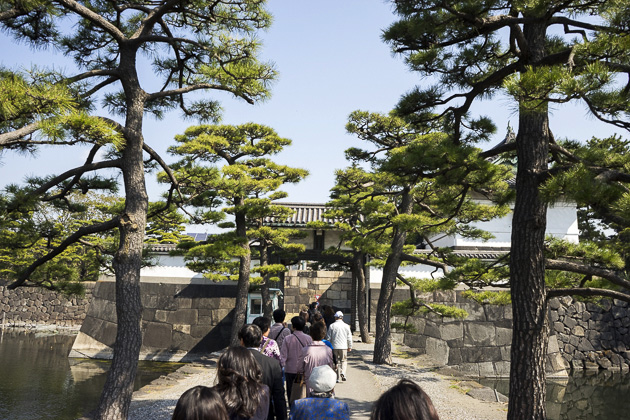
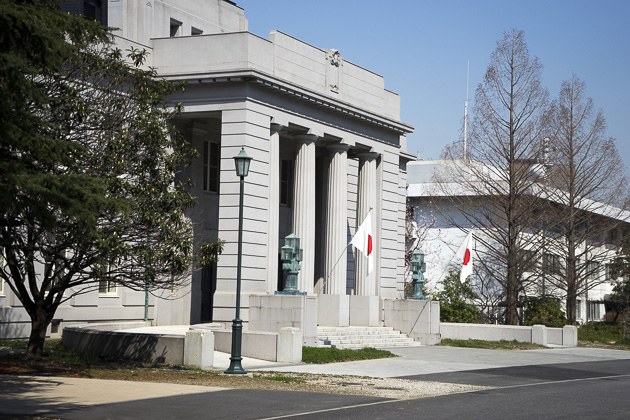
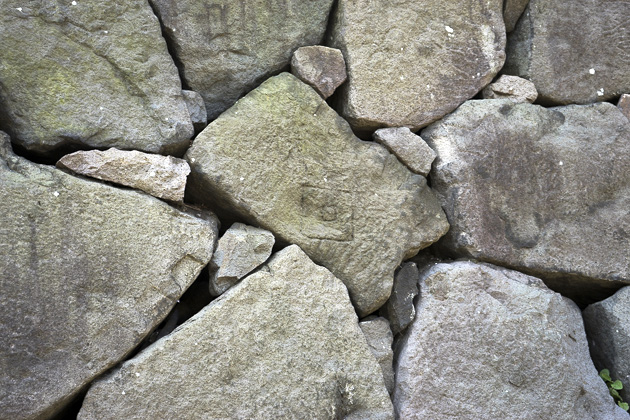
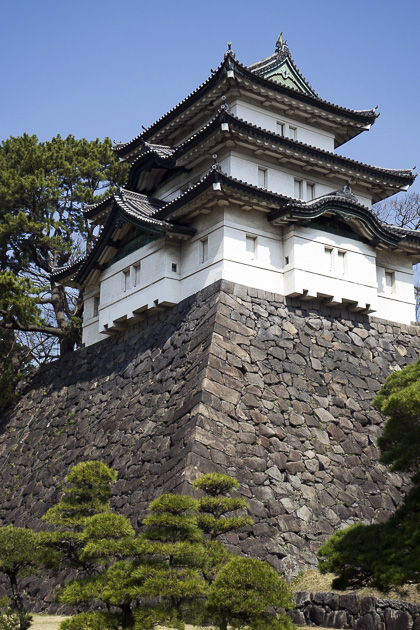
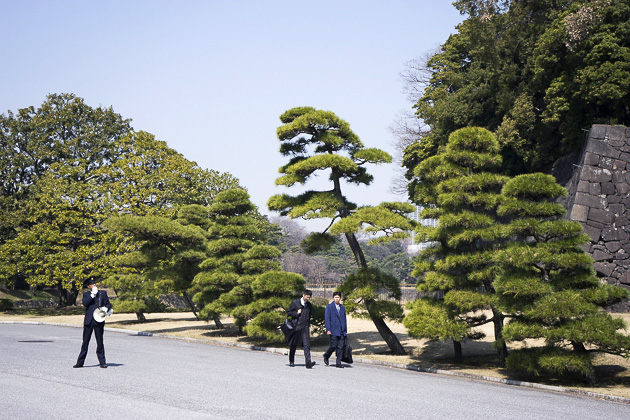
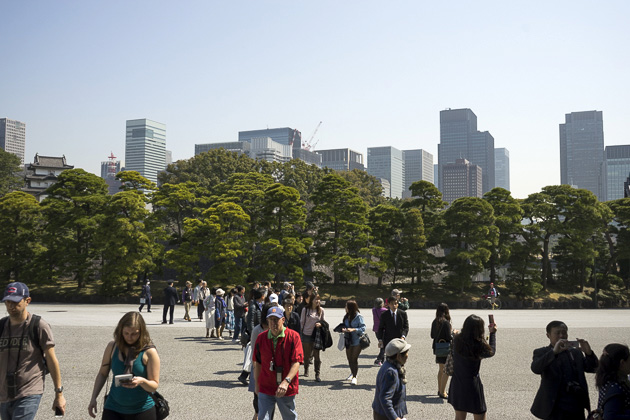
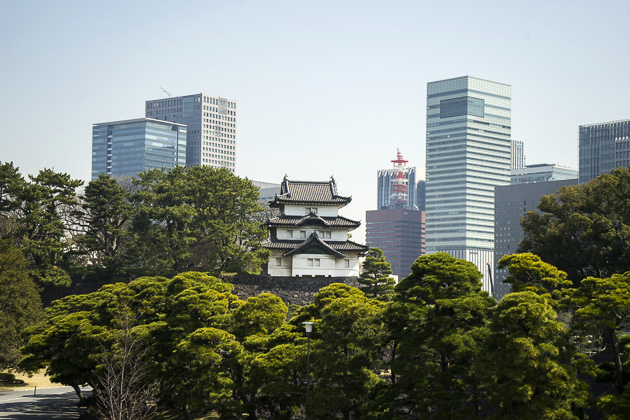
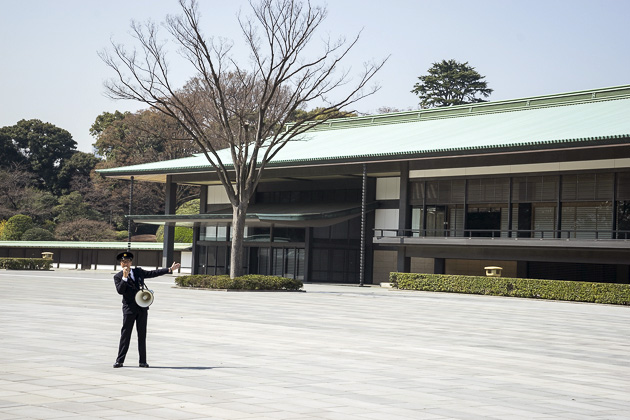
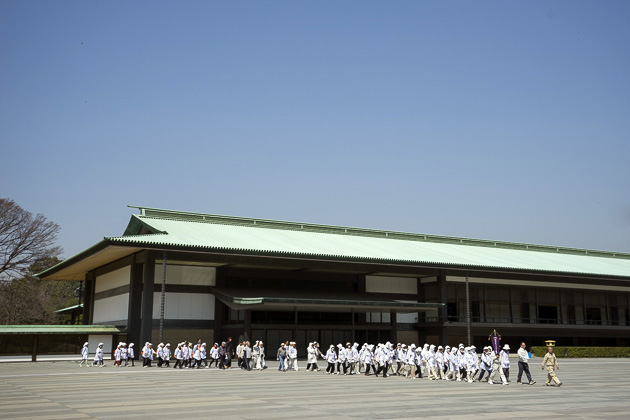

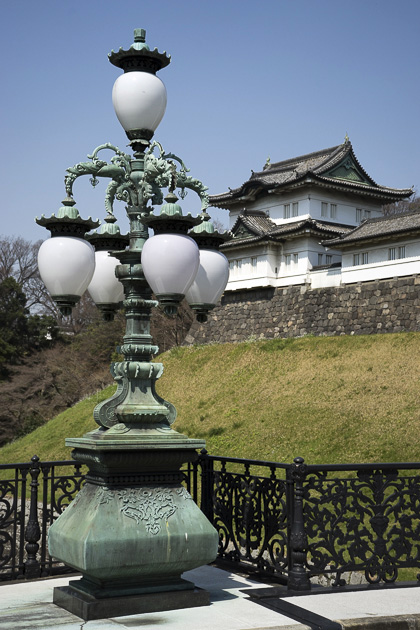


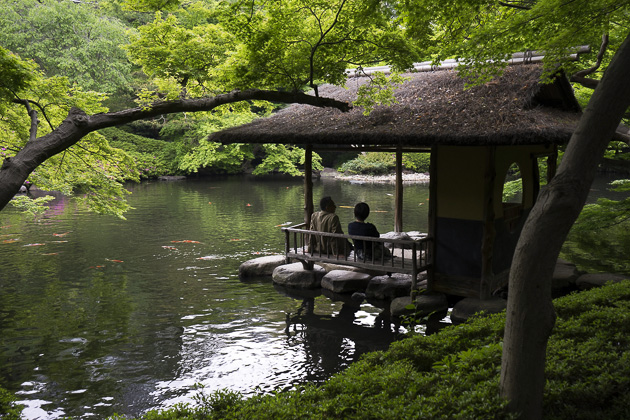
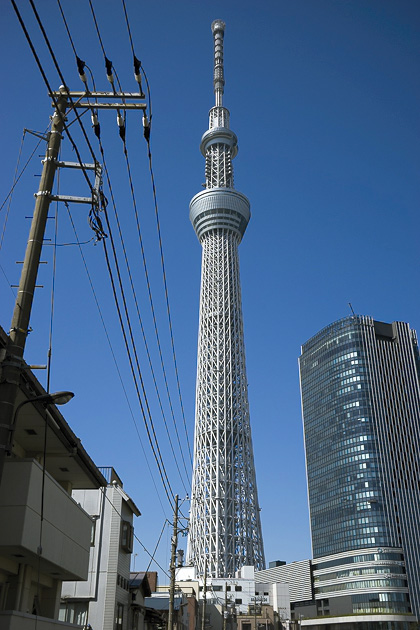
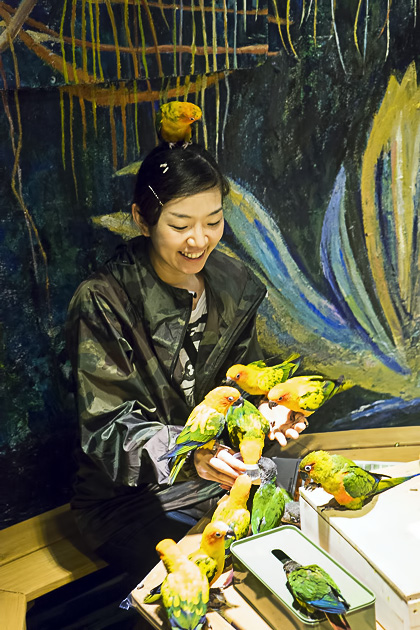

Pingback: Tokyo Station and Marunouchi | For 91 Days in Tokyo – Travel Blog
Pingback: Hibiya Park & The Outer Palace Gardens | For 91 Days in Tokyo – Travel Blog